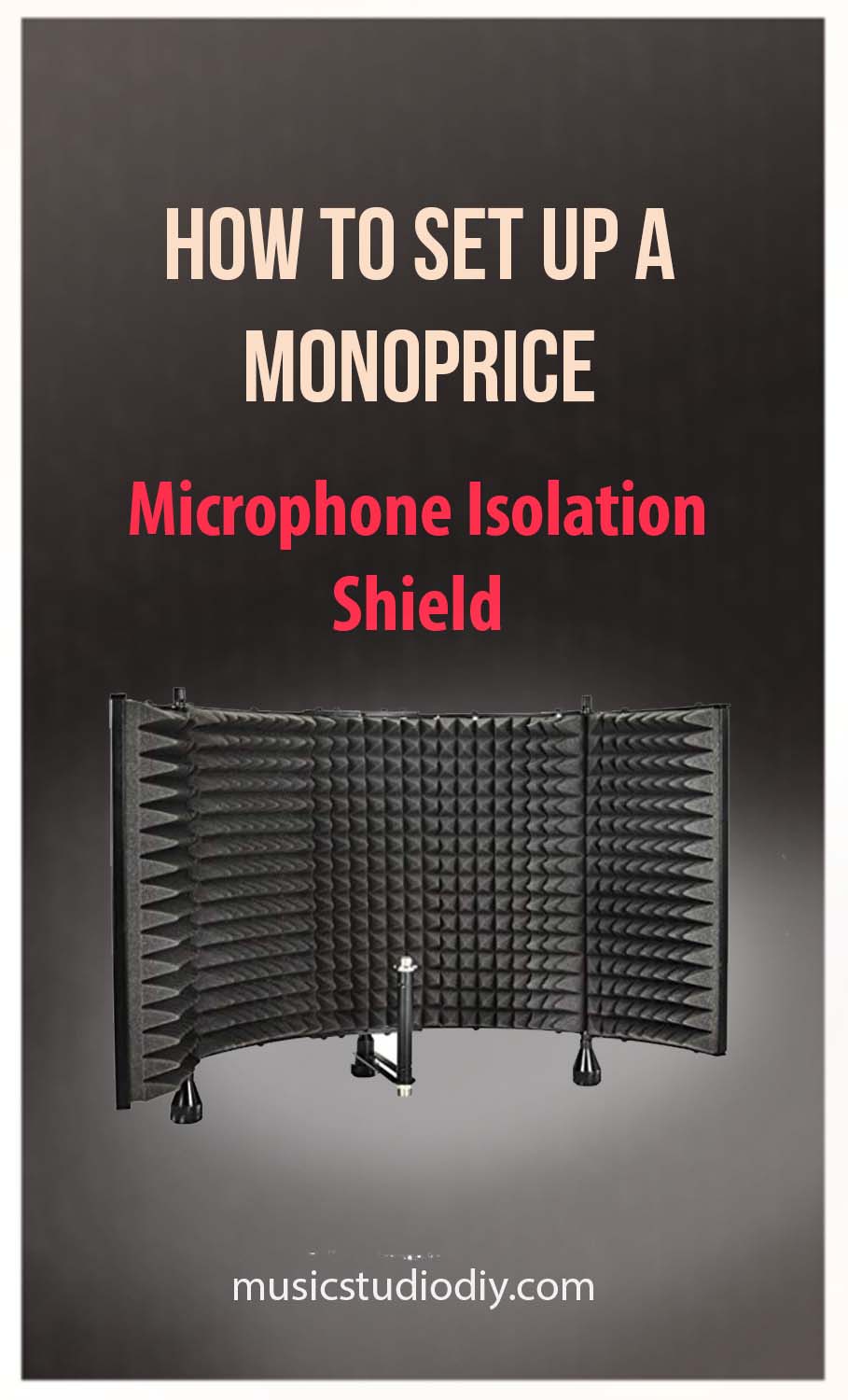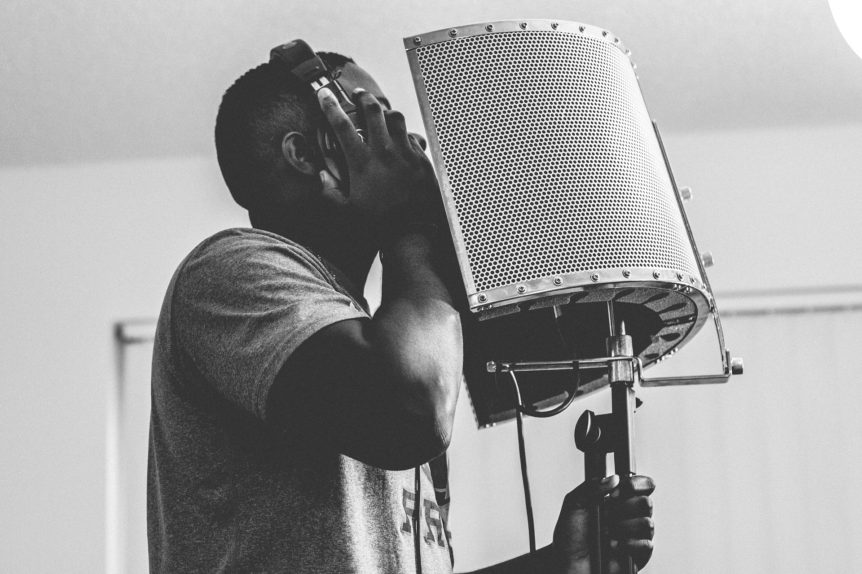 Achieving the optimal clarity and quality of your recorded vocals is greatly desired in any studio environment. The Monoprice Microphone Isolation Shield promises to help you reach the ideal sonic clarity in your music studio. In this article, we take a look at What Stands to use with the Monoprice Microphone Isolation Shield. In addition, we also discuss what microphones would be appropriate for use this shield.
Achieving the optimal clarity and quality of your recorded vocals is greatly desired in any studio environment. The Monoprice Microphone Isolation Shield promises to help you reach the ideal sonic clarity in your music studio. In this article, we take a look at What Stands to use with the Monoprice Microphone Isolation Shield. In addition, we also discuss what microphones would be appropriate for use this shield.
The production of pure vocals is key in order to project a professional sound. And to do this, the use of microphone shields in your studio is truly one great step in that direction. Today we take look at the Monoprice Microphone Isolation Shield. Specifically, this article will look at what microphones and stands are best suitable for this equipment.
Overview: Monoprice Microphone Isolation Shield
The Monoprice Microphone Isolation shield is specifically crafted for the production of pure vocal recordings. It offers a solid structure designed for the prevention of ambient sound from entering your microphone.
Its features in terms of design and build include:
An arced metal ventilated back-plate, allowing airflow for the mic
- Acoustic foam on the front of the 3 plate sections
- Foldable for storage, alternatively for adjusting the size of the arc
- Dual clamp mounting for either 1 1/4″ diameter stands or booms
- 3/8″ to 5/8″ thread adapter
- 3/8″ threaded mount
- Full size when assembled: 23.5″ x 15.4″ x 11.0″
- Size when collapsed: 17.3″ x 15.4″ x 5.5″
Why Use a Microphone Isolation Shield?
Sound reflections are an existent factor in all studio environments. Sound reflections refer to excess resonances that travel from the sound sources and ricochet/reflect off of flat various surfaces in the studio. Professional setups will typically apply acoustic treatment to their studio in order to manage the issue of reflection. This is really advisable whether you’re working from a pro musical environment, or starting out from your bedroom studio.

Microphone isolation shields function by blocking out unwanted noises, and ensuring that a more direct sound reaches the mic. You’d benefit a great deal from both acoustic treatment, as well as soundproofing. But to take things a step further the use of a microphone isolation shield would further eliminate external sounds, and also the surplus of resonances in the room. Especially in the case of live recordings, isolation shields would definitely be useful.
If you’re making use of very sensitive mic types, like a condenser mic, for instance, an isolation shield could be hugely beneficial. More so if you find that, despite your sonic treatments, you can still hear distinct external noises still slip through and meddle with your recordings.
What Stand to use with the Monoprice Microphone Isolation Shield?
The Monoprice Microphone Isolation shield is known to be a little on the heavy side. Weighing in at 11.75 pounds, you will definitely need to ensure you have adequate support. The best way to support the Isolation Shield is by mounting it on a heavy-duty tripod microphone stand. The gadget comes with a dual clamp mounting bracket, which makes it suitable for attachment to virtually any stand.
A few suggestions on Amazon to look at would include:
- Pyle: Heavy Duty Microphone Stand
- On-Stage: Tripod Microphone Stand
The options above are all heavy duty, and should be able to withold the weight of the stand. You may choose to add further DIY reinforcement the base of the stand if you’d like. But these should do the job sufficiently.
As an alternative, you could have the Monoprice Microphone Shield facing downward, such that your microphone is in a suspended position. This setup would also require two extended tripod stands as indicated above.
Have a look at the Monoprice Microphone Isolation Shield here on Amazon.
What Microphones Can be used with the Monoprice Microphone Isolation Shield?
Honestly speaking, to get the optimal clarity you want from your recordings, you’re not really limited in terms of microphone types. This would refer to cardioid condenser vs dynamic etc. Just keep in mind the adapter size of the isolation shield. The isolation shield can accommodate 3/8 and 5/8 adapters. So consider this aspect when either selecting an accompanying mic.
Microphone isolation shields would be a little more imperative in situations where live recording with other musicians is taking place. Highly sensitive microphones can pick up the faintest of sounds, even in studios with sufficient acoustic equipment. The most common microphones to use for vocals are either dynamic or condenser microphones. Another type that is a little less common in smaller studios is the ribbon microphone.
For a more detailed understanding of the types/functions of microphones check out this article.
Microphones by type
Cardioid Condenser microphones are typically on the more sensitive side. Using an isolation booth would be recommended for this mic type for this reason. Condenser Mics may vary, however, you typically want to avoid using this type of microphone for harsh or louder sounds (instrumentally). However, these are preferable for recording vocals in the studio.
Dynamic microphones on the more cost-effective side. Condenser mics, on the contrary, are known to be higher up in the price range. Dynamic microphones, in general, are known to be a little more robust. They have much tougher diaphragms and can withstand greater sound pressure.
Irrespective of the mic type or brand you choose to go for, keep in mind the 3/8 to 5/8 adaptor size.

